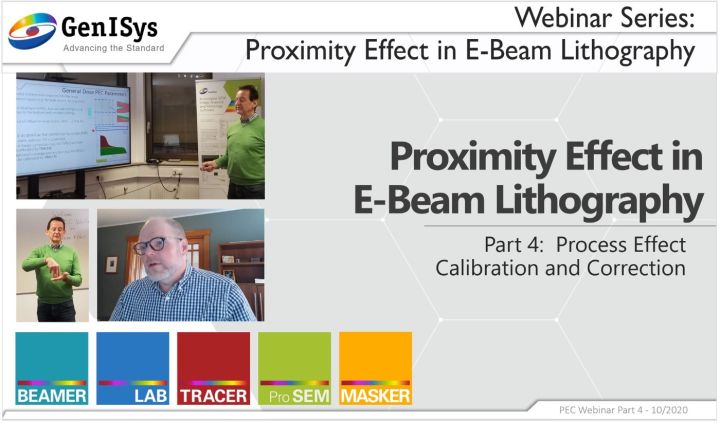Part 4 – Process Effect, Calibration / Correction
Speaker:
Richard Bojko, Ulrich Hofmann - GenISys GmbH
Takeaways:
- What is the “Base Dose” for most stable process
- Process calibration procedure with TRACER
- Effective Short-Range Blur including process effects
- Lateral development effect and density dependent bias
- Limitation of Optimum Contrast for thick low contrast processes
- HSQ process effects
Summary of the Webinar:
- “Real” processes have many effects beyond electron scattering
- Process / metrology bias
- Lateral development from finite resist contrast (density dependent)
- Additional midrange process effects
- PEC Dose Range depends on
- Resist contrast: consequence of the iso-focal shift (image iso-focal -> process iso-focal)
- High-contrast requires Diso/Ddense = 1 + 2*BS/FS, one PMMA required Diso/Ddense = 1 + 1.2*BS/FS
- Additional midrange terms such as resist sensitivity changes (e.g. HSQ from catalytic reactions)
- TRACER is adding an additional mid-range energy term on top of the electron scattering PSF
- Maximizing the blur latitude important because
- Shot size dependent focus shifts
- Shot size dependent blur variability
- This results in Uniform Clearing or mix factor strategies (substrate and resist contrast dependent)
- Ability to play with parameters & see effects on process window
- BEAMER can be used to correct for not only the “Proximity Effect” but also these additional process effects

